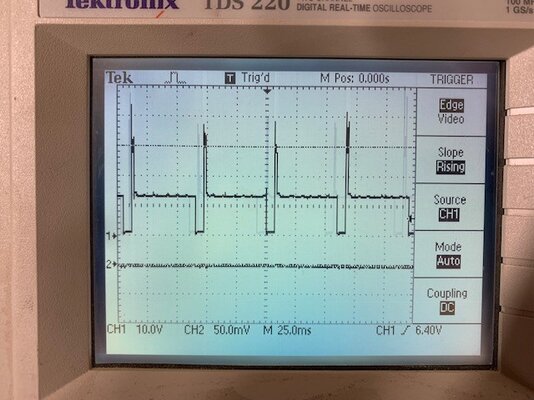- Joined
- Apr 22, 2011
- Messages
- 3,338
- Reaction score
- 396
- Location
- Princeton, Texas
- First Name
- Gary
- Last Name
- Waugh
Okay guys, I am fitting a combination speedo/rev counter to my wife’s 2020 CRF250F, I have wired it up correctly and the unit powers on and seems to work. However the engine RPM is reading half what it should be, ie the engine is running at 4,000RPM but the rev counter shows 2,000RPM. I have confirmed the unit is set up for a single cylinder, but I suspect they are expecting it to be a single cylinder 2 stroke not 4 stroke (so one spark every revolution of the crank, rather than the 1 spark every 2 revolutions that a 4 stroke has). The rev counter is connected to the low voltage side of the ignition coil and works perfectly except for it showing half the actual engine RPM. I looked at the wiring diagram for this bike and there is an ignition pickup that will see a pulse once every revolution of the crankshaft, however it’s an inductive pickup and the 2 ends of the pickup connect to 2 pins on the ECU. One pin is marked PCM and the other pin is marked PCP, I have no idea what these acronyms mean and don‘t know which end I should try connecting to the rev counter to see if it will show the correct RPM. I will get an oscilloscope and check the signals (once my garage has got a bit warmer) but I was hoping someone on here might be able to tell me what the 2 acronyms mean, I would expect one end of the pickup coil to connect to a virtual ground and the other no to pulse up and down as the trigger on the crankshaft passes the pickup, but which pin is the ground and which is the actual signal? We have a lot of mechanics on here, so hoping someone might be able to tell me before I dig the scope out and freeze trying to check the signals!! I have also contacted the rev counter manufacturer, but they are Chinese so I don't expect much help!!
Regards Gary
Regards Gary



 Feel free to hang out and lurk as long as you like. However, we would like to encourage you to
Feel free to hang out and lurk as long as you like. However, we would like to encourage you to 
